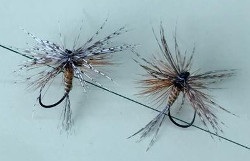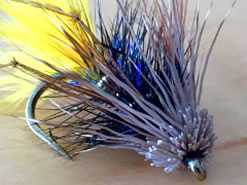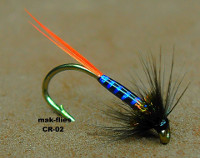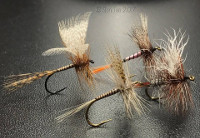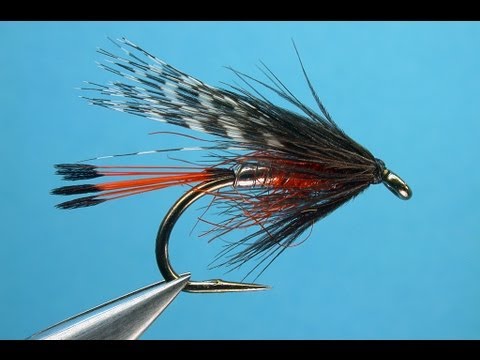"In my family, there was no clear division between religion and fly fishing."
Norman Maclean, A River Runs Through It, 1976
"The gods do not deduct from man's allotted span the hours spent in fishing." Babylonian Proverb
 Welcome to the Hans Weilenmann
Welcome to the Hans Weilenmann
Flytier's Page
4945 patterns by 267 tiers, fully illustrated & described.
Lots of Video links to You Tube: Fly Tying.
Click the pictures for the Videos.
My name is David Cammiss and I would like to take this opportunity to share with you my passion for tying fishing flies.
I have singled this fly tyer out because he  teachers fly tying on you tube and now on his own web site in a very simple way, discussing the materials has he goes along with an easy going style great for someone just starting out. This is a must site for beginners or someone just wanting to brush up on technique.
teachers fly tying on you tube and now on his own web site in a very simple way, discussing the materials has he goes along with an easy going style great for someone just starting out. This is a must site for beginners or someone just wanting to brush up on technique.
One of the crucial parts of the fly is the wip finish; this video is the best I have seen on the net for using the wip finishing tool. The Whip finishing tool is probably the most difficult tool for anyone new to fly tying to learn. The Tool is used to finish off a fly and tie a knot at the head. This way the fly does not unravelled when fly fishing with it. There is a technique to using the whip finish tool, follow the video and practice on a bare hook first!
"I look into... my fly box, and think about all the elements I should consider in choosing the perfect fly: water temperature, what stage of development the bugs are in, what the fish are eating right now. Then I remember what a guide told me: 'Ninety percent of what a trout eats is brown and fuzzy and about five-eighths of an inch long."
-Allison Moir
A good selection of fly tying videos from YouTube bought together, both for the beginner or professional Tier.

|
 |
 |
 |
 |
|
 |
||
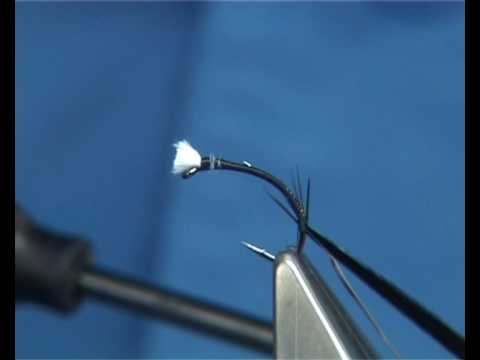 |
||
 |
 |
|
 |
||
 |
 |
 |
 |
 |
 |
 |
 |
 |
 |
 |
 |
I think the Frank Sawyer Pheasant Tail video created quite a stir, the other great fly of Sawyers the Killer Big! I have found a perfect substitute for Chadwicks 477 used in this fly, details below of the person who found it and the testing he did. If interested use the contact form I have ordered some.
Sorry there will be a wait for 477 substitute while I order some more!
An article I found interesting by Phil Anderson
I have little of the original Chadwick’s 477 it must be 25 years old and have tried over many years to find some more to no avail. I have sample after sample of yarn that is sold has Chadwick 477 Substitute, but all are too thick and a darker shade. So this article intrigued me have a read.
I have long been intrigued by Frank Sawyer's Killer Bug and the mystique of Chadwick's 477 yarn. I've gone through phases in recent years of buying various
|
yarns in an attempt to find a good substitute, but then giving up after not succeeding. I bought or was given (thanks Tom!) many different yarns, including most of those discussed on the Internet as being Chadwick's substitutes. The colors, though, were always disappointing when compared to online photos of authentic Chadwick's. But online photos of 477 vary quite a lot in color, and I was never sure exactly what the correct color was.
Then, about a year ago, I stumbled across a card of original Chadwick's 477 and bought it for the princely sum of $5. Sometimes an angler just gets lucky! A lengthier account of this windfall is described here.
 In photo, I've worked hard to make the color balance in my photography and on my computer monitor as close as possible to the real item. Your monitor may vary. The most useful photos are those in which both the Chadwick's and substitute yarns are in the same photo. That eliminates potential differences of camera settings, lighting, exposure, etc.
In photo, I've worked hard to make the color balance in my photography and on my computer monitor as close as possible to the real item. Your monitor may vary. The most useful photos are those in which both the Chadwick's and substitute yarns are in the same photo. That eliminates potential differences of camera settings, lighting, exposure, etc.
Perhaps the most convincing demonstration of the substitute yarn's color match to Chadwick's 477 is this photo:
Article by Phil Anderson:
Full Information here.





